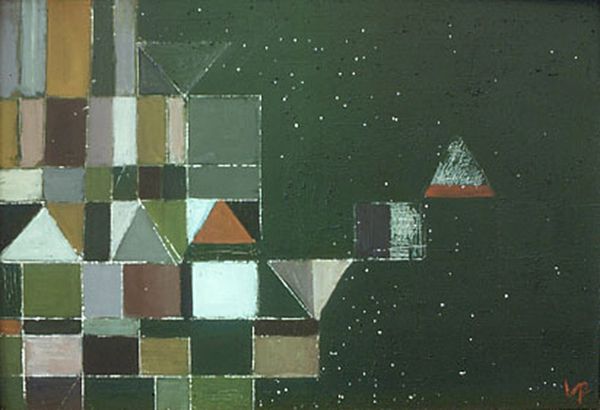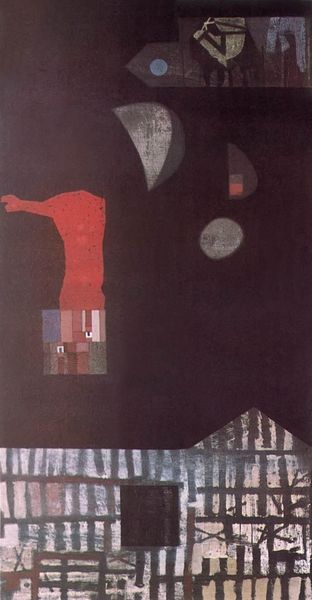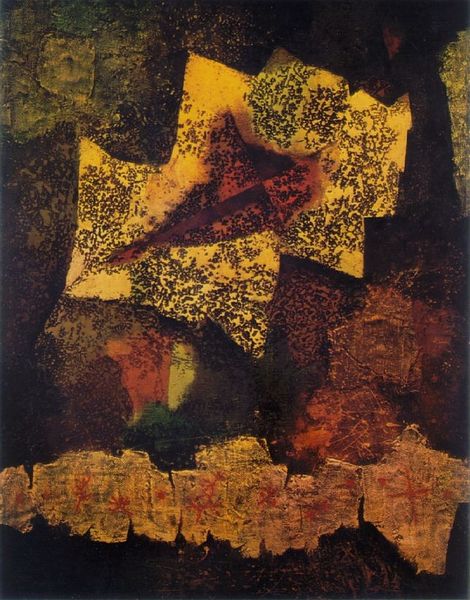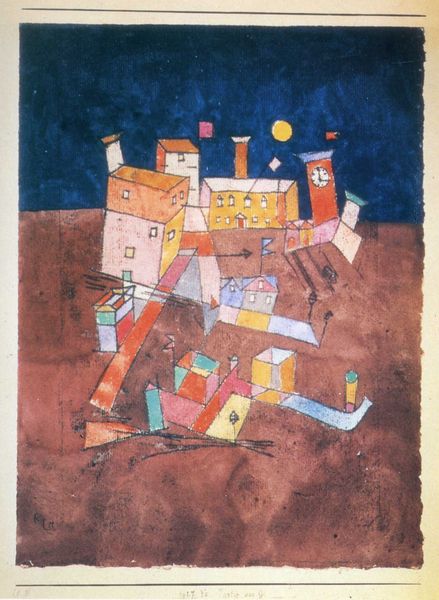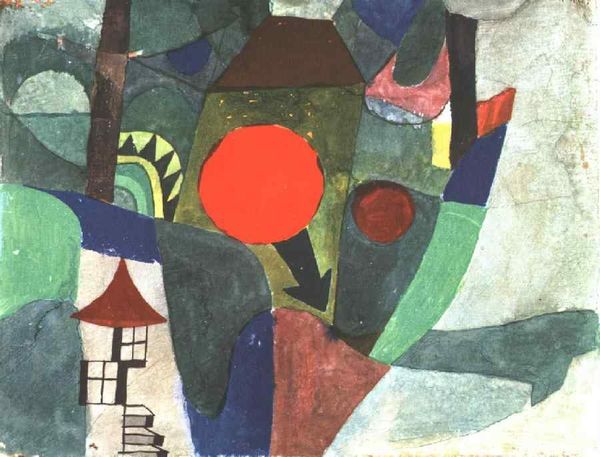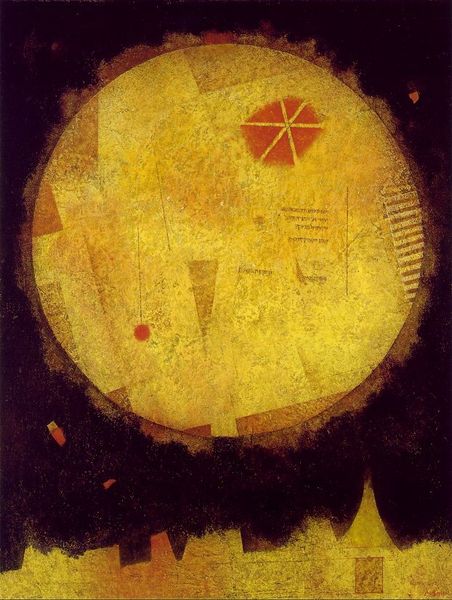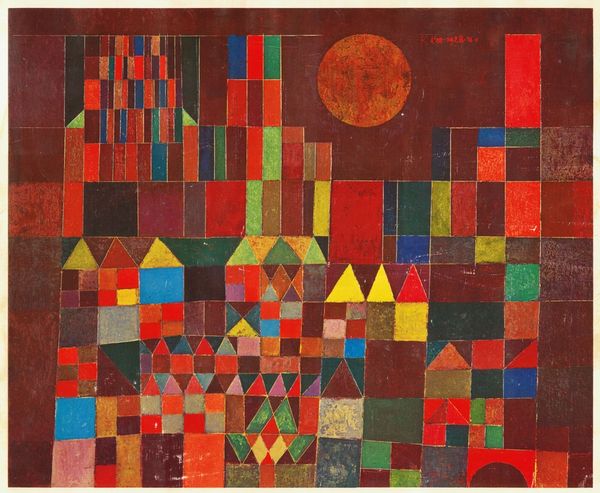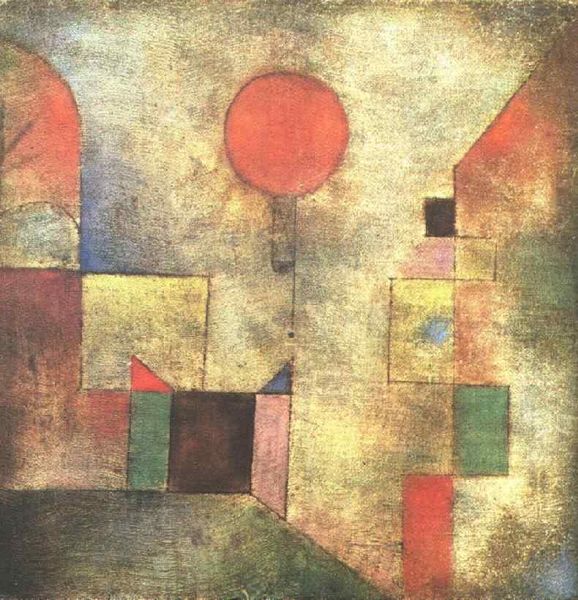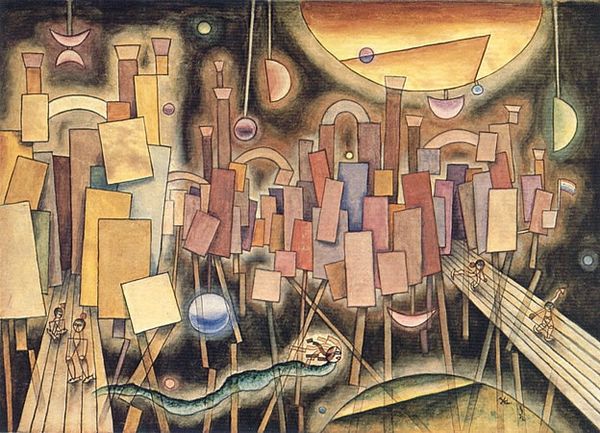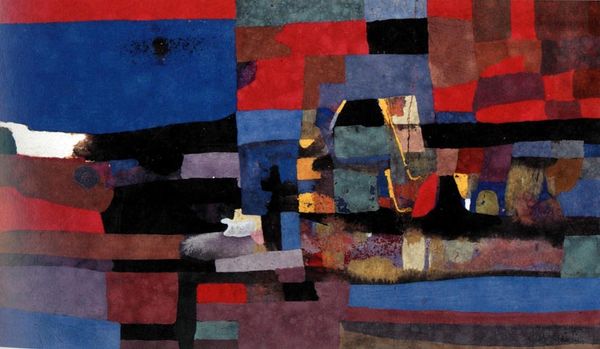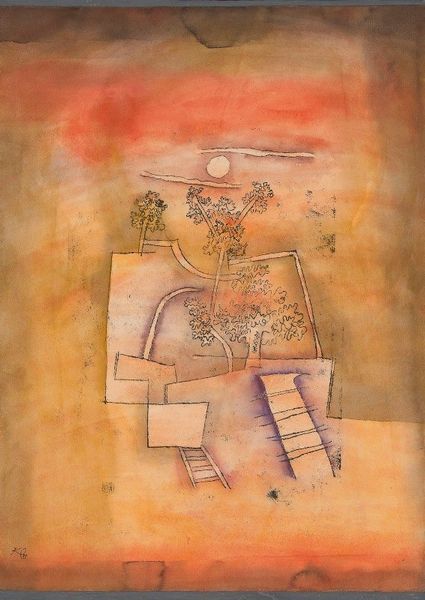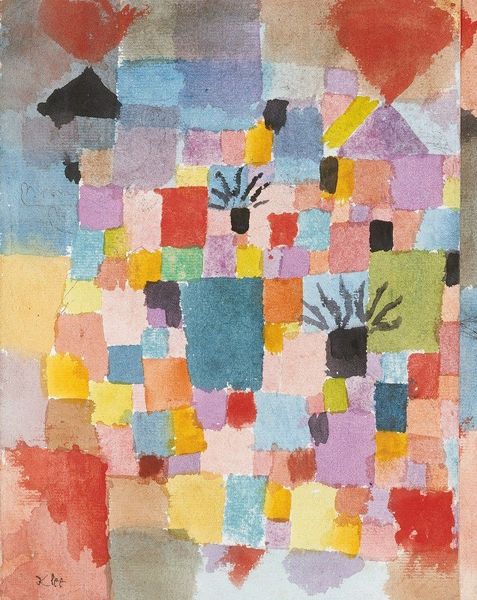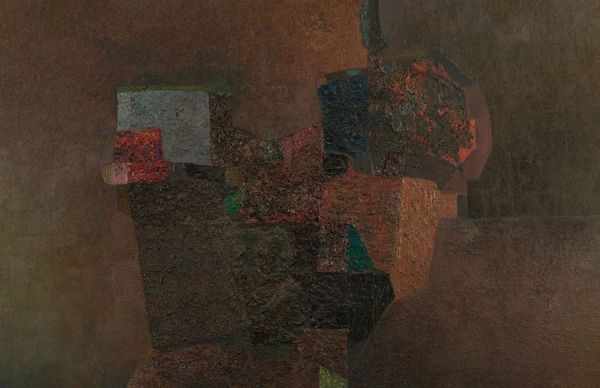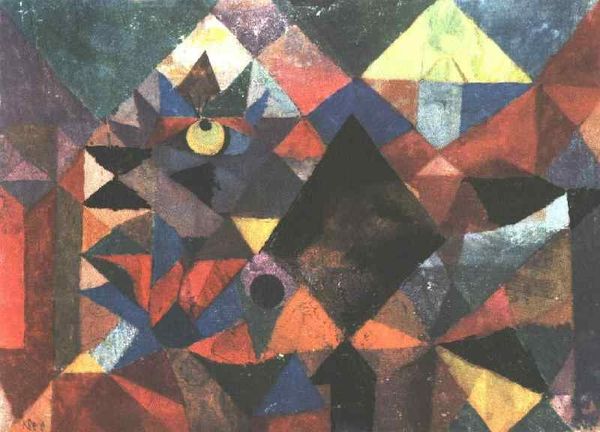
Dimensions: 44 x 46 cm
Copyright: Public domain
Curator: Looking at Paul Klee's "Chosen Site," created in 1940 using mixed media, including oil paint and watercolor, one can immediately see the geometric forms reminiscent of architecture. Editor: My initial impression is quiet unease. The colors are muted, the forms feel slightly unstable, and that off-kilter, patterned circle—is that the sun, the moon, something else?—adds to the strange, melancholic atmosphere. It's not traditionally beautiful, but it holds my gaze. Curator: The use of oil and watercolor, coupled with Klee’s abstract style, certainly creates a layered effect, both visually and conceptually. I'm curious about how this city exists beyond pure visual delight: the brown in contrast with those block buildings and green background hints at a certain construction in material terms. What's your interpretation of that patterned circle you pointed out? Editor: It could be a stand-in for progress, civilization perhaps, but something feels off. Each geometric part making the greater image of that circle has it own design within a set formation. Is it truly harmonious? Klee's piece makes me question the foundations upon which society and art are created, whether or not they fulfill or constrict the spirit. It’s a cityscape seen through a fractured lens, like a dream or a distant memory, almost crumbling. Curator: That perspective aligns with the social context of its time. Given the painting was made in 1940, amidst the Second World War, and shortly before Klee’s death, the geometric buildings read to me like the constructed shelters in war as much as traditional cityscapes, hinting at both structure and instability. We could look at the production and purpose of making during that period to understand the nuances of its muted tones too. Editor: Yes, I think those tensions are key, which in some ways transcends context too. Thanks, you have opened my eyes even more to the work. Curator: My pleasure! Examining "Chosen Site" through materiality and historical production methods does enhance one’s view, I think.
Comments
No comments
Be the first to comment and join the conversation on the ultimate creative platform.
